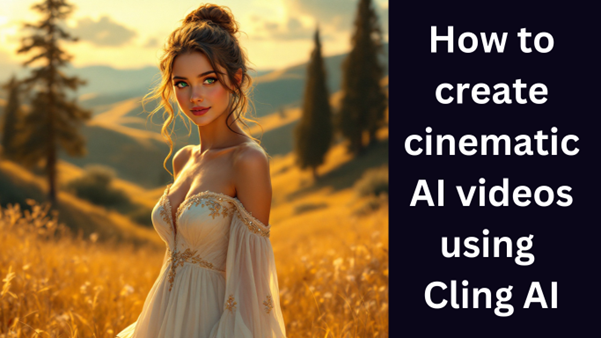Creating Cinematic AI Videos with Kling AI: A Comprehensive Guide

Introduction
In the ever-evolving world of AI-generated content, creating high-quality, cinematic videos has become more accessible than ever. Kling AI stands out as one of the best platforms for generating AI videos, offering unparalleled quality and detail. This blog will guide you through the process of creating the absolute best AI-generated videos using Kling AI, from generating reference images to upscaling video resolution. By the end of this tutorial, you’ll have a complete workflow for producing the most cinematic AI videos.
Table of Contents
- Using Image-to-Video in Kling AI
- Generating Reference Images in Midjourney
- Upscaling Image Resolution
- Kling AI Settings for Optimal Results
- AI Video Prompt Tips
- Upscaling Video Resolution
Using Image-to-Video in Kling AI
Kling AI offers two main options for video generation: text-to-video and image-to-video. For the highest quality results, the image-to-video tool is recommended. This tool generates a video based on image references you upload, ensuring that the visual style and details are consistent throughout the video.
Steps to Use Image-to-Video
- Log In: Start by logging into Kling AI and heading over to the AI video generator.
- Select Image-to-Video: Choose the image-to-video option to ensure high-quality results.
- Upload Reference Images: Upload the images you’ve generated as references for the video.
- Describe the Scene: In the prompt, describe what you want to happen in the video, thinking of it like writing a script for a movie.
- Adjust Settings: Fine-tune the settings to control the creativity and relevance of the AI to your prompt.
- Generate the Video: Click generate to create your video.
Generating Reference Images in Midjourney
Before diving into Kling AI, you need high-quality reference images. Midjourney is an excellent tool for generating detailed and realistic images that can be used as references in your AI videos.
Steps to Generate Reference Images
- Visit Midjourney: Go to the Midjourney website and head to the image creation tab.
- Describe the Image: In the prompt bar, describe the image you want. For example, “a photo of The Monkey King Sun Wukong with detailed fur and accessories, shot on Kodak film with muted cinematic colors.”
- Adjust Parameters: Set the aspect ratio to 16:9 and use the “high quality 2” parameter for extra texture.
- Generate Images: After a few generations, select the images with the desired details.
- Create Additional Images: Generate images for other characters or scenes, ensuring a consistent visual style and color grading.
Upscaling Image Resolution
To maximize the quality of your AI-generated videos, it’s crucial to upscale the resolution of your reference images. Higher resolution and sharper details in your images will result in better quality videos.
Steps to Upscale Image Resolution
- Visit Magnific: Go to the Magnific website, a popular AI upscaler.
- Upload Images: Upload your reference images to Magnific.
- Adjust Settings: Set the scale factor to 2 and leave other parameters at their default settings.
- Upscale Images: Click the upscale button and download the upscaled images to your computer.
Kling AI Settings for Optimal Results
To get the best results from Kling AI, it’s essential to understand and adjust the settings accordingly.
Key Settings
- Creativity and Relevance Slider: Controls how much the AI follows the prompt. A higher value will follow the prompt closely, while a lower value gives the AI more creativity.
- Generation Mode: Choose “professional mode” for better detail preservation and realistic quality.
- Video Length: Select a 5 or 10-second video. Longer videos can lead to inconsistencies and deformations.
- Prompt Tips: Use words that encourage smaller, more subtle motions to preserve the shapes of your characters. Avoid large movements that can distort the anatomy.
AI Video Prompt Tips
Crafting the right prompt is crucial for generating high-quality AI videos. Here are some tips to help you get the best results.
Prompt Tips
- Encourage Subtle Motions: Use words like “subtle motion,” “static camera,” and “slowly” to encourage smaller, more controlled movements.
- Avoid Large Movements: Large movements can cause the anatomy to look weird. Stick to smaller, more subtle movements for better results.
- Iterative Process: Running the same prompt multiple times can produce different results. Sometimes it just takes a few tries to get the right video.
Upscaling Video Resolution
To take your AI videos to the next level, upscale the video resolution using a tool like Topaz AI. This will enhance the details and sharpness of your videos, making them look even more cinematic.
Steps to Upscale Video Resolution
- Download Topaz AI: Download and install Topaz AI on your computer.
- Drag and Drop Videos: Drag and drop your video files into the software.
- Adjust Settings: Change the upscale settings to 4K video for super high resolution. Use the “Rea upscale scaler” for better quality.
- Export Videos: Change the codec to “prores” if you plan to edit the video clips, then hit export to upscale all the selected video clips.
Conclusion
Creating cinematic AI videos with Kling AI is a rewarding process that involves generating high-quality reference images, upscaling their resolution, and fine-tuning the settings in Kling AI. By following the steps outlined in this blog, you can produce stunning AI videos that captivate your audience. Don’t forget to experiment with different prompts and settings to achieve the best results. Happy creating!
The combination of tools like Midjourney and Kling AI opens up so many possibilities. What do you think is the biggest limitation creators might face when aiming for truly cinematic results with AI? It’s exciting to imagine where this technology could take creative storytelling!